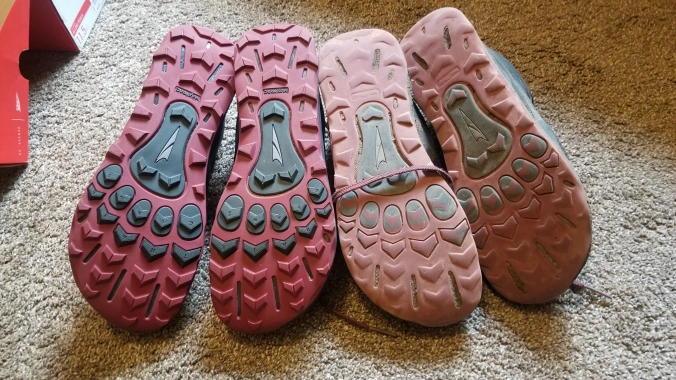Note: For an index of all articles in all three Favorite Songs series, click here, then scroll down.
Who They Were: INXS were one of the most popular bands of the ’80s, visual and musical stalwarts of the peak/early MTV era, before a ferocious critical/cultural backlash made them uncool pariahs of the ’90s grunge era, with their story (mostly) ending after the tragic and untimely death of singer Michael Hutchence in 1997. Prior to Hutchence’s passing, the Australian sextet had never experienced a personnel change over two decades of music-making, with the three Farriss brothers (Andrew on keys, Jon on drums, and Tim on guitar) joined by bassist Garry Gary Beers, guitarist-sax player Kirk Pengilly, and Hutchence. The young band were taken under the wing of fellow road warriors Midnight Oil in their early years, honing their chops and songs in the crucible of Australia’s notoriously tough pub circuit. The group’s first two albums, released in 1980 and 1981, did well enough in their homeland, while 1982’s Shabooh Shoobah was their first disc to chart globally. Three records later (each selling more than the ones before it), 1987’s Kick marked the group’s commercial high water-mark, with an insanely popular and punchy collection of video and radio hits. The four subsequent albums reversed that commercial trend, with record buyers and critics alike becoming increasingly savage about their output, in one of those occasional feeding frenzies that often follow popular groups’ inexplicably massive successes. Think about the ways that the once-beloved Bee Gees were suddenly despised after Saturday Night Fever, or the ways in which Phil Collins became a punchline after his own ubiquitous ’80s era, for similarly unjustified critical dog piles of the type inflicted upon INXS through most of the ’90s. Hutchence’s death was generally treated salaciously in the music press, given his messy personal life at the time, and the nudge-nudge-wink-wink innuendos around whether he chose to take his own life, or whether he succumbed to auto-erotic asphyxiation gone wrong. Not widely covered at the time was the fact that he had been assaulted in 1992, suffering a fractured skull and traumatic brain injury, that dramatically altered his personality, reduced his pleasure in life (he lost his ability to taste and smell), and led to severe problems with anger management and impulse control. It’s a sad story, at bottom line, not a titillating one. The other five members of the group continued on intermittently with various transitional lead singers, issuing two additional studio LPs in 2005 and 2010, before closing their story for (seemingly) good.
When I First Heard Them: Late 1982-ish, when “Don’t Change” and “The One Thing” from Shabooh Shoobah were regularly featured in MTV’s early days. (This was my plebe year at the Naval Academy, so the only time and way that I was able to watch television or listen to music was to plop down at a bar somewhere on a Saturday night with MTV airing, nursing cheap and watery beer as long as I could to get the music fixes I desired). I wasn’t as wild about “Original Sin,” the big single from 1984’s The Swing, but 1985’s Listen Like Thieves was a hit-filled masterpiece, and the first of their albums that I purchased in real time. I have a strong memory from that time of an argument with a friend, who I shall not name and shame here, about how to pronounce the group’s moniker; I knew it was “In Excess,” (inspired, in part, by XTC), but he was hell-bent and willing to go to the mat for his preferred “Inks-Is.” Errrr, nope. Later, Kick came out and hit big around the time Marcia and I started dating, and it was a big part of the soundtrack of our early years together, along with the pair of albums that followed it. I stuck with the band, happily, through Hutchence’s death, and while their ’90s albums received increasingly dire (and unfair, to my ears) reviews, I quite liked all of them, right up until the bitter end. Still do, actually, and you’ll see those later LPs well-represented in my Top Ten list below.
Why I Love Them: Great tunes, played with punch and panache, at bottom line. The main songwriting team of Andrew Farriss and Michael Hutchence had deep skills at crafting ear-worm melodies with engagingly interesting lyrics, and the group’s pub-honed and long-stable chemistry made them tight, tight, tight, on hard rockers, dance tunes, and smooth ballads alike. Their peak coincided with the emergence of such fellow ’80s superstar stalwarts as the Police, U2, Dire Straits, Duran Duran and others, but their sound and approach felt richer and deeper to me in their time (likely attributed to their sextet configuration, which allowed them a broader palate than many of their fellows), and I listen to INXS far more often than I do their peers of that era, their music sounding less-dated to my ears in 2024 than some of the other biggest contemporary hits of their original heyday. While they certainly embraced the visual approaches of the early MTV era, there always seemed to be a nice bit of grit behind the gloss, with Hutchence’s smoky and sultry R&B-inflected voice resonating more strongly for me than, say, the archness of the New Romantic types, or the self-seriousness of U2’s anthems, or the keening tenors of Sting and his many would-be imitators. They were a great rock band offering tunes with great beats that you could dance to (and I did that, a lot), and a solid stable of well-crafted songs that still make me turn the volume up, lamenting as I do both their unfortunate end, and the way that they were treated in pop culture in the years following their commercial apex. I’m sure some might want to lump my love for the group into the “guilty pleasures” bucket, but I don’t feel that way at all, as there’s nothing guilt-inducing for me in loving good music like this, even if it’s not cool to do so. (Note that since INXS were such video-making monsters, every one of my Top Ten songs below features “official” imagery, even some of the deeper cuts, which is unusual among the artists covered in this series).
#10. “The One Thing,” from Shabooh Shoobah (1982)
#9. “Listen Like Thieves,” from Listen Like Thieves (1985)
#8. “The Messenger,” Full Moon, Dirty Hearts (1993)
#7. “Need You Tonight,” from Kick (1987)
#6. “The Gift,” from Full Moon, Dirty Hearts (1993)
#5. “What You Need,” from Listen Like Thieves (1985)
#4. “Don’t Change,” from Shabooh Shoobah (1982)
#3. “Devil Inside,” from Kick (1987)
#2. “Suicide Blonde,” from X (1990)
#1. “Not Enough Time,” from Welcome to Wherever You Are (1992)

















